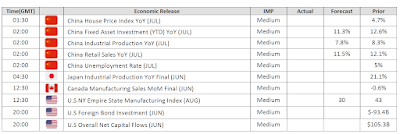The dollar is nursing losses today and kept near multi-week lows
Federal Reserve Chair Jerome Powell laid out a slower-than-expected path to rate hikes
Traders latched on to the wiggle-room in the rates outlook and sold dollars
The Australian and New Zealand dollars also hung on to sizeable Friday gains

The dollar slid on Friday after Federal Reserve Chair Jerome Powell indicated in a highly anticipated speech that the U.S central bank could start tapering its massive support to the economy could start by year's end, which was not as fast as many in the market had assumed. Powell said there had been clear progress toward maximum employment and he believed that if the U.S. economy improved as anticipated, "it could be appropriate to start reducing the pace of asset purchases this year." But Powell told the Fed's annual Jackson Hole symposium the timing and pace of tapering should not be construed as a signal for when interest rates will begin to rise. The speech showed Powell has not adopted the hawkish stance of some Fed officials. It's pretty clear that if you were worried about the timeline, that we announce in September that we're going to taper starting Oct. 1, that's not there in this speech. It's not as bad as feared based on the most extreme of the hawks.
The dollar index, which measures the greenback's performance against a basket of six major currencies, fell 0.39% to 92.6760.
The euro rose 0.37% to $1.1794, while the yen fell 0.24% at $109.8200. After minutes of the Fed's policy-setting meeting in July was released last week, the dollar advanced because most market participants anticipated tapering to begin this year.
Powell was clear to detach tapering from the rate liftoff, or raising interest rates.
The dollar fell as market participants sharply lowered expectations for the Fed’s long-term tightening trajectory. The dollar began to retreat about 15 minutes before Powell spoke, after James Bullard, president of the St. Louis Fed, reiterated his hawkish view that tapering should begin soon and end by next year's first quarter. Benchmark 10-year Treasury yields fell 3.4 basis points to trade at 1.3104%. On Thursday yields jumped to 1.375%, the highest since Aug. 12.
The Canadian dollar rose 0.56% to 1.2612 versus the U.S dollar.
Brent futures, the international benchmark for crude, rose $1.63 to settle at $72.70 a barrel and gained 11.5% for the week.
The Canadian currency generally takes its cues from oil, the risk with the S&P 500 as a proxy, and interest rate differentials.
The Canadian dollar's strength on Friday was a reflection not so much of Canada, but what's happening in the U.S and the market takeaway from Powell's speech.
Britain's pound jumped half a percent to the dollar to more than a week's high on Friday and was set for a 1% weekly gain as the greenback fell after U.S Federal Reserve chair Jerome Powell stopped short of signaling the timing for a policy shift.
Euro
The single currency gained on Friday as the dollar fell as market participants sharply lowered expectations for the Fed’s long-term tightening trajectory. The dollar began to retreat about 15 minutes before Powell spoke, after James Bullard, president of the St. Louis Fed, reiterated his hawkish view that tapering should begin soon. Overall, the EUR/USD traded with a low of 1.1744 and a high of 1.1777 before closing the day around 1.1750 in the New York session.
Yen
The Japanese Yen traded higher in Friday’s trading session as the dollar nursed losses and kept near multi-week lows after Federal Reserve Chair Jerome Powell laid out a slower-than-expected path to rate hikes, while a storm lashing oilfields in the Gulf of Mexico lifted oil-exposed currencies. Powell was vague on the timing of tapering. Overall, the USD/JPY traded with a low of 109.90 and a high of 110.21 before closing the day around 110.06 in the U.S session.
British Pound
The British Pound jumped half a percent to more than a week's high on Friday and had a 1% weekly gain as the greenback fell after U.S Federal Reserve chair Jerome Powell stopped short of signaling the timing for a policy shift. The lack of a concrete signal about the potential tapering of the central bank's stimulus program knocked the dollar lower. Overall, the GBP/USD traded with a low of 1.3687 and a high of 1.3766 before closing the day at 1.3698 in the New York session.
Canadian Dollar
The Canadian Dollar gained on Friday after the greenback dropped broadly after Powell managed to flag an exit from emergency monetary policy settings that did not spook markets or suggest a rush to raise interest rates. Traders latched on to the wiggle-room in the rates outlook and sold dollars, while Treasury yields fell. Overall, USD/CAD traded with a low of 1.2582 and a high of 1.2693 before closing the day at 1.2683 in the New York session.
Australian Dollar
The Australian Dollar is edging higher versus the US Dollar in today’s Asia-Pacific session. The Greenback is unchanged against most of its peers. Traders may be digesting Fed Chair Jerome Powell’s comments from Friday’s Jackson Hole Economic Symposium. Mr. Powell’s message hinted that tapering QE asset purchases will likely commence this year but failed to give a clear timeline. Overall, AUD/USD traded with a low of 0.7331 and a high of 0.7379 before closing the day at 0.7368 in the New York session.
###
All information has been prepared by TraderFactor or partners. The information does not contain a record of TraderFactor or partners prices or an offer of or solicitation for a transaction in any financial instrument. No representation or warranty is given as to the accuracy or completeness of this information. Any material provided does not have regard to the specific investment objective and financial situation of any person who may receive it. Past performance is not a reliable indicator of futures performance.










